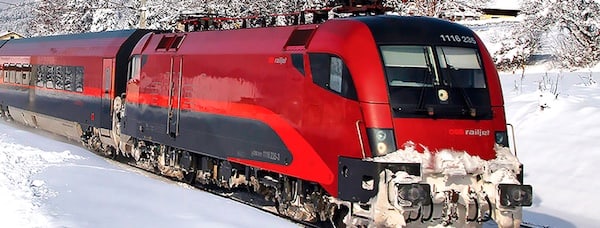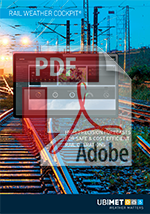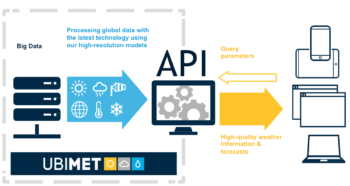More precise planning for increased safety, efficiency and rail network availability
Snowfall, storms and rising water levels lead to snow drifts on tracks, blocked roads, flooding and brings traffic to a halt, increasing costs. With precise weather forecasts for the railroad and infrastructure sector planning and implementing short-term counter measures and maintenance activities can be optimised.
Challenges for railroad & infrastructure
With events such as snowfall, storms and flooding, weather can lead to the closure of entire railway networks and traffic routes. Delays of 60 minutes or more, even when caused by weather events, result in a 25% fare refund – according to EU passenger guidelines. In no other sector is the compliance with schedules and the timely transport of persons and goods as important as here. It is also necessary to avoid costs due to weather-related delays or cancellations along transport routes and railway lines. According to the UIC Safety Report 2016, 4% of all railway accidents are weather-related. The safety of their passengers is of paramount importance for all railway operators.
Rail Challenges:
Prevent delays and cancellations with precise weather forecasts
Through the Weather Cockpit, UBIMET provides specifically developed, high-resolution weather models and pinpoint forecasts for railroad and infrastructure. Reliable and location-specific weather forecasts and severe weather warnings enable efficient route planning. This prevents delays or cancellations on transport routes and railway lines and helps lower costs. The weather forecasts can be easily integrated into a tailor-made, customer-specific portal or in a special application used by the customer. The API interface “UBIMET:Connect” provides additional quick and easy access for integrating weather data in a variety of systems.
UBIMET Solutions:
.
Want to integrate hyperlocal weather insights into your own systems?
With the UBIMET API “UBI:Connect” it’s easy to create a connection between your systems and UBIMET’s high-quality hyper-local weather database. Find out more on our dedicated weather API page or ask for more information below.









